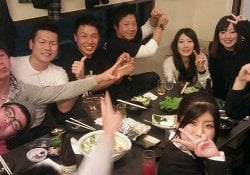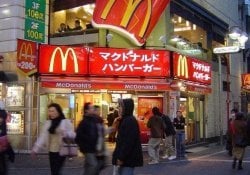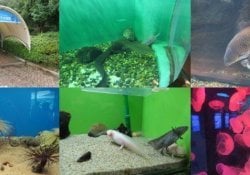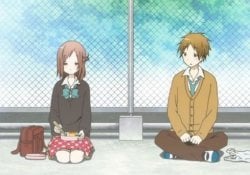Today I bring you a great destination if you are considering going to Japan. Kyoto (or in Japanese Kyoto [京都]) is one of the biggest tourist destinations in Japan and the world. What's good there? I don't know if you're interested in temples, historic centers, different cultures, industrial centers, so I won't mention just one, but all tourist attractions in this part of Japan.
But before we look at the reflection in the water, let's see what's in it. In this way we can be better informed and in relation to some important historical events and facts, we will not be disappointed if there is a situation that requires this knowledge. It will also be useful because Kyoto is rich in historical landmarks.
As the article is gigantic, we will leave a Summary Below to facilitate your navigation:
Índice de Conteúdo
Kyoto general information
Kyoto is not only a city, but also the name of its province (state), it is located in the south center of the country. Its population is about 1.5 million people in 2010, it was founded in the 1st century. It also became the capital of imperial Japan, replaced in 1868 by the current Tokyo. It is also nicknamed the “city of the samurai” and the “city of the samurai”.
Kyoto is very close to Osaka, Kobe, Nara and Shiga, other big cities full of tourist attractions. Kyoto is located in a very strategic point, its surroundings form a region known as Keihanshin, which is home to more than 18.5 million people (a relatively high number) making it the second largest population region after Tokyo.
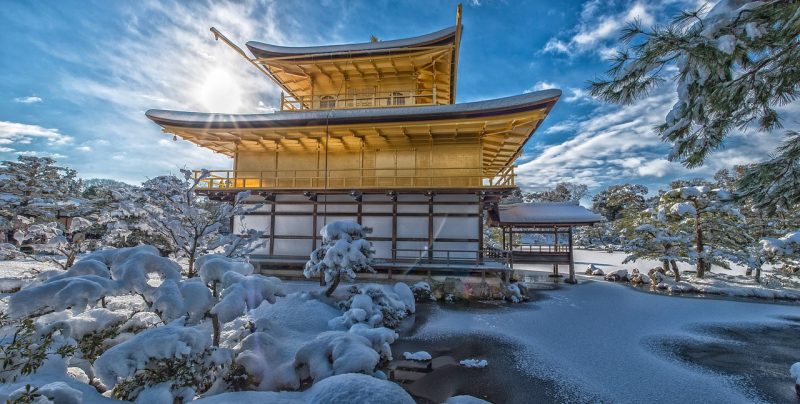
Kyoto's history
Little is known of Kyoto's history before the 6th century. During the 7th century, Emperor Kanmu decided to relocate the capital to a place far from the clerical establishment in Nara, at which time a large Buddhist clergy became involved in imperial rule.
A new city called Heian-Kyo became the seat of Japan's imperial court in 794, thus beginning the Heian period in Japanese history. And this is basically the beginning of Kyoto, which remained the capital of Japan until the time of the Meiji Restoration.
Between 1467 – 1477, the city suffered major destruction during the Onin War, and did not recover until Toyotomi Hideyoshi rebuilt the city in the 16th century. Also making new streets to double the number of streets north-south of the city center. So a few years later, during the Edo period (we have an article here on the site talking specifically about this period), the city grew to become one of the three largest cities in Japan, alongside Osaka and Edo (now Tokyo).
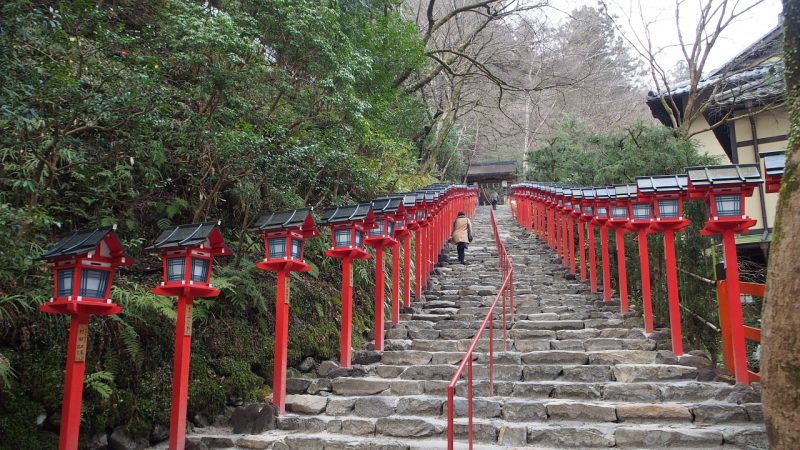
Kyoto and World War II
As many of us know, Japan was widely destroyed during the Second World War, the two atomic bombs themselves wreaked havoc both physically and mentally in Japan. But it could have been worse, not in the sense that the damage was relatively good or other things like that, I have to say it could have been much worse.
In 1932, the population of this city exceeded 1 million people. This means that during the second war, if it was hit by one of the atomic bombs, more than half of that population could have died, all hypothetically. Just to be clear, the US has considered this issue for two reasons:
The article is still halfway through, but we recommend also reading:
Why was Kyoto the intellectual center of Japan?
It had a large enough population to persuade the Emperor to surrender. We have to thank Henry L. Stimson for his insistence in trying to save this cultural center he had known on his diplomatic travels and also on his honeymoon. This man was secretary of war under the Roosevelt and Truman administrations. So Kyoto was taken off the targets and not better replaced by Nagasaki. However, Kyoto did not emerge completely unscathed from this war, it suffered some bombings.
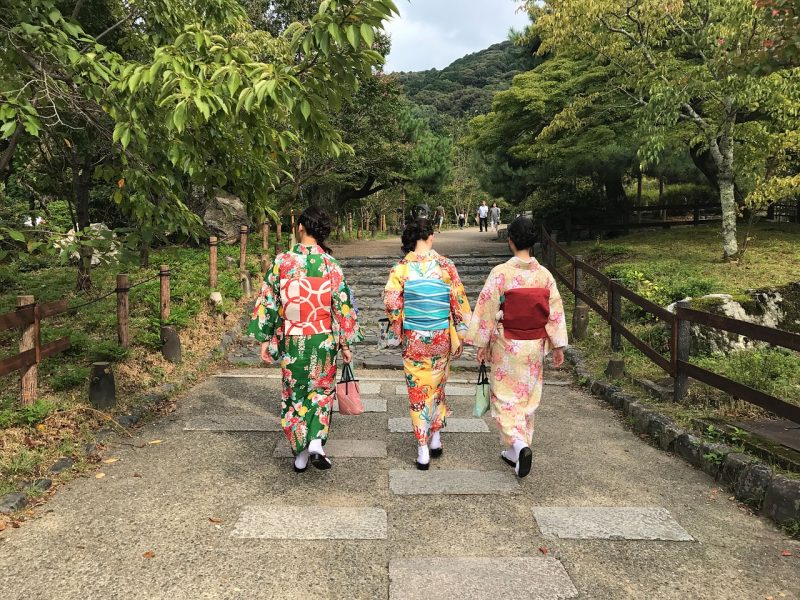
Kyoto location
As a result of being cut off from bomb targets, Kyoto is one of the few Japanese cities that still has a large amount of pre-war buildings. But modernization is taking over the city and hiding traditional architecture in favor of modern.
But changing the subject, Kyoto is situated in a valley, part of the Yamashiro Basin, in the eastern part of the mountainous region known as the Tamba Plateau. Surrounded by three mountains named Higashiyama, Katayama and Nishiyama. This basin contains three rivers, the Ujgawa to the south, the Katsuragawa to the west and the Kamogawa to the east.
Kyoto structure
It was originally built according to the traditional Chinese feng shui custom. Thus the front of the imperial palace pointed towards the south, resulting in the Ukyõ which was the right side of the city on the west, and the Sakyo which was the left side of the city on the east side.
Today, in the southern part of the old palace is located the main business district, and in the northern part is the green and less populated part of the city. Kyoto is almost entirely dependent on Lake Biwa for its water supply, being partially dependent on the Uji River. Kyoto has eleven neighborhoods that together form the city. And just like other Japanese cities also have only a single mayor is a city council.
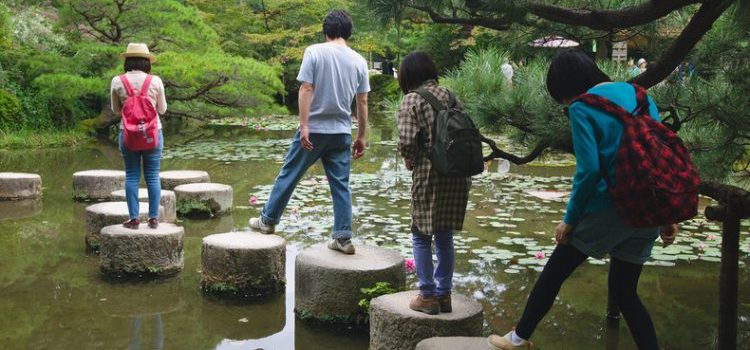
Kyoto culture
With over 2000 religious sites as well as palaces, gardens and intact architecture, Kyoto is one of the most preserved Japanese cities. Who hasn't heard of Kinkaku-ki temple? The one known as the golden pavilion, so as not to spoil the surprise I won't give more examples. But I can say that this is a city with a rich culture and many cultural aspects that are very well preserved.
Kyoto is also known for its cuisine. As it is a city far from the sea and also home to many Buddhist temples, it has resulted in a wide variety of peculiar vegetables being developed in the region. The spoken dialect is called Kyō-kotoba or Kyōto-bem, derived from Kansai dialect. The dialect was in fact Standard Japanese at the time when Kyoto was the capital and influenced the development of the Tokyo dialect, Modern Standard Japanese.
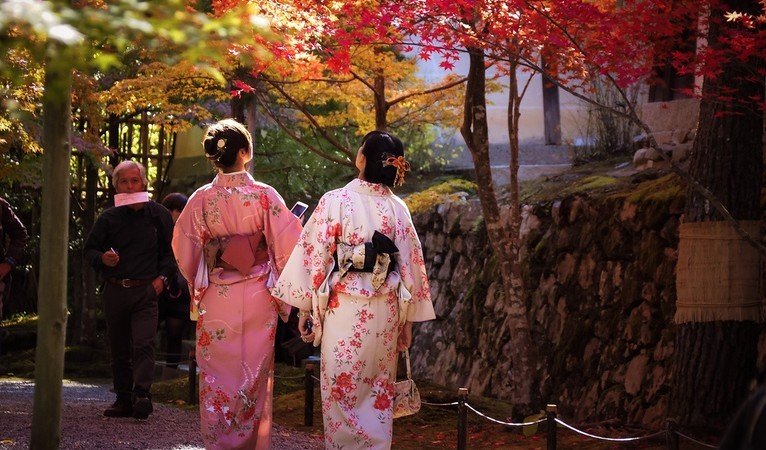
Kyoto economy
To talk about the Kyoto industry, we have to cite things like Information technology, electronics, tourism, crafts and sake brewing as the most relevant. So that's what we're going to talk about. However, just like any other city, there are several other sectors that participate and that will not be mentioned here.
But before that we will put other more general information. The population concentration in the capital is 55%, which makes it the largest among all in this regard. Its economy has a significant difference between the coastal area and the interior area. In 2010 the country had the fourth largest economy in the country with around 10.12 trillion Japanese yen.
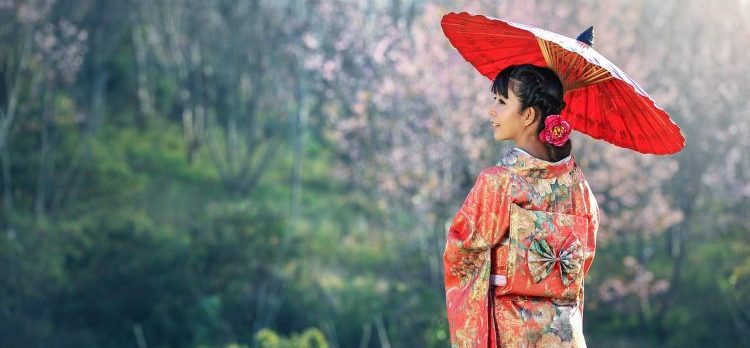
Kyoto's economic sectors
Information technology and electronics are the main activities in Kyoto, it is home to the headquarters of companies such as Nintendo, intelligent Systems, Nissin Electric, Screen Holdings and others. All relevant companies in the area. Tourism has another big part in the economy, its cultural heritage is great attractions visited by tourists from all over the world and even scalar groups from all over Japan, yes there they have respect for their heritage regardless of people's age.
Handicrafts as a product of artisans and particularly kimono weavers in this city are extremely popular. The latter was a great one in the past centuries but has declined in recent years, however the city remains a major center for the manufacture of kimonos.
And finally, we have the sake industry, a traditional industry in Kyoto. Companies like Gekkeikan and Takara Holdings are examples of companies headquartered in the city, these in question are the largest among them. And as we know, sake is a traditional drink from Japan, just like cachaça is from Brazil, so we can deduce why this is such a big deal.
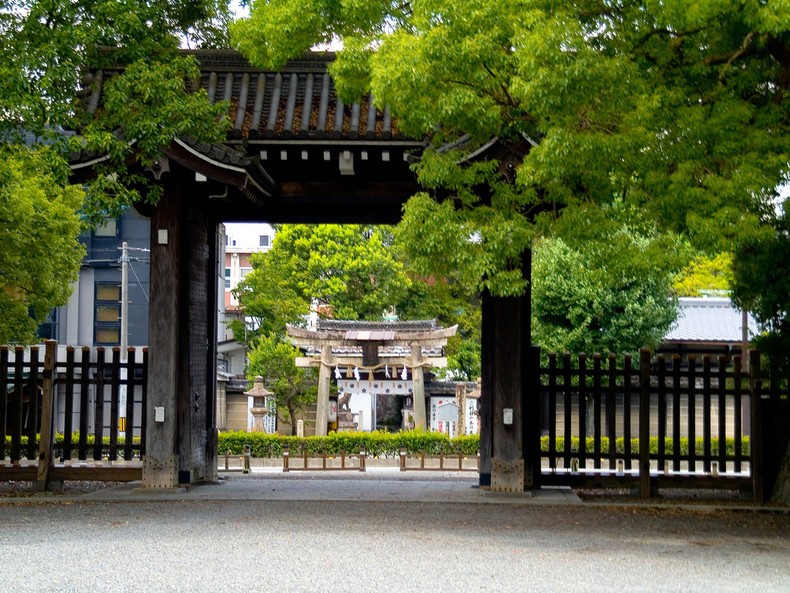
Education and transport in Kyoto
With the right attributes every city can have a good education, but Kyoto stands out in this area as one of Japan's academic centers. In addition to the 40 higher education institutions installed in the city, the University of Kyoto stands out among them for being considered one of the best in the country.
It is the second best University in the country, behind the University of Tokyo, which is no surprise, according to Times Higher Education, and according to this Ranking, it is the 25th in the world. Not only it, but other famous private universities are also headquartered in the city, such as Dõshisha University and Ritsumeikan University.
Perhaps this will be the subject of a Post in the future, as it is interesting to see how good the education system in Japan is. But for now we will have to make do with just this information. But now we will move on to the main objective of this article which is to present some options for tourism.
Tourist attractions
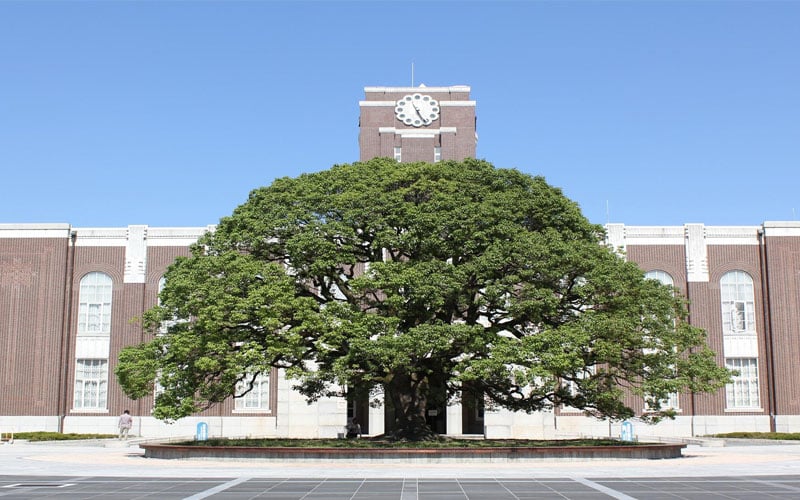
Books related to Kyoto
Kyoto tourist attractions
We will primarily name the main tourist attractions and then make a list of other specific interesting points.
Fushimi Inari Shrine
It is an important Shinto shrine in southern Kyoto. It is famous for its thousands of red gates, which span a network of trails behind its main buildings. The trails lead into the wooded forest of sacred Mount Inari, which stands at 233 meters and belongs to the shrine grounds.
Fushimi Inari is the most important of several thousand shrines dedicated to Inari, the Shinto god of rice. Foxes are believed to be Inari's messengers, resulting in many statues of foxes on the grounds of the shrine. The Fushimi Inari shrine has ancient origins, predating the capital's move to Kyoto in 794.
Kyoto Railway Museum
The Kyoto Railway Museum was opened in April 2016 by JR West on the former site of the Umekoji Train and Locomotive Museum, about a 20-minute walk from Kyoto Station.
Covering three floors in an area of 30,000 square meters, the museum displays a total of 53 retired trains, from steam locomotives to newer electric trains and shinkansen. Visitors can also walk underneath and observe the inner workings of a retired freight locomotive.
In addition to the railway museum there are many other museums as:
- Samurai & Ninja Museum;
- Gekkeikan Okura Sake;
- International Manga Museum in Kyoto;
- Kyoto Shibori Museum;
- National Museum of Kyoto;
- Municipal Art Museum of Kyoto;
- Jotenkaku Museum;
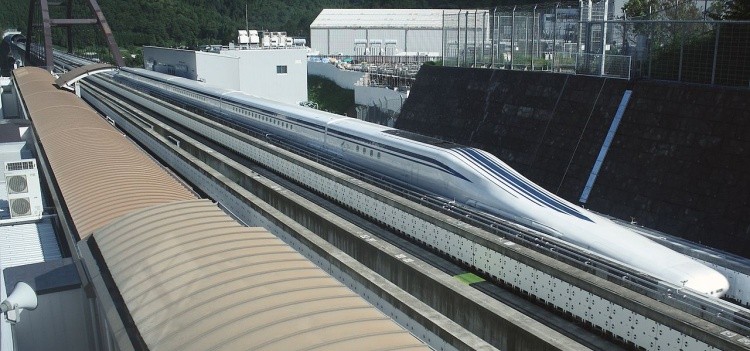
Nishiki Market and Shopping
Nishiki Market (Nishiki Ichiba) is a narrow five-block shopping street lined with more than a hundred shops and restaurants. Known as “Kyoto Cuisine”, this retail market specializing in related foods such as fresh seafood, produce, knives and pans is a great place to find seasonal foods and Kyoto specialties.
The stores found throughout the market range in size from small, narrow stalls to large two-story stores. Most specialize in a specific type of food, and nearly everything sold in the market is locally produced and sourced. Tourists especially like the inviting and pleasant atmosphere that this place offers.
Other popular places in Kyoto where you can shop are:
- Kitano Tenmangū;
- Shinkyogoku;
- Gion;
- Nishijin;
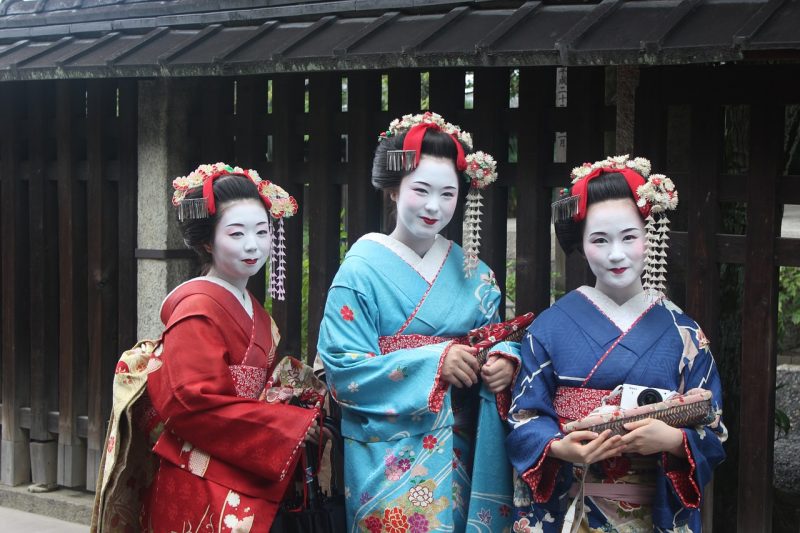
Kinkakuji (Golden Pavilion)
Kinkakuji is a Zen temple in northern Kyoto whose top two floors are completely covered in gold leaf. Formally known as Rokuonji, the temple was the retirement village of shogun Ashikaga Yoshimitsu and, by his will, became a Zen temple of the Rinzai sect after his death in 1408.
Kinkakuji is a structure built overlooking a large lake. It burned numerous times throughout its history, including twice during the Onin War; and once again in 1950, when it was set on fire by a fanatical monk. The current structure was rebuilt in 1955.
In addition to the golden temple, there is the silver temple called Ginkakuji which is located in the eastern region of Kyoto at the foot of Mount Tsukimachi, its work began at the end of the 15th century.
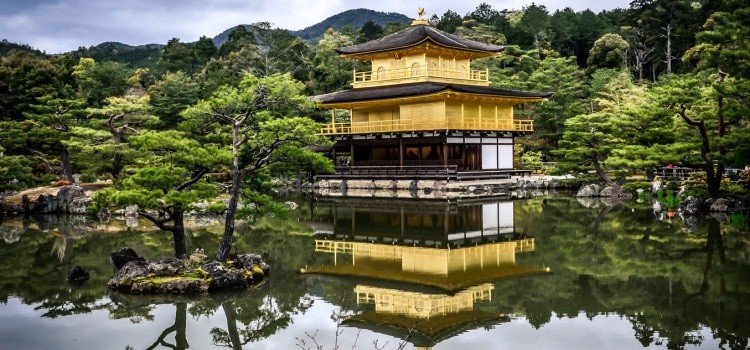
Arashiyama - Bamboo Forest and Monkey Mountain
Arashiyama is a tourist district on the western outskirts of Kyoto. The area has been a popular destination since the Heian Period (794-1185), when nobles would enjoy its natural setting. Arashiyama is particularly popular during the cherry blossom and autumn color seasons.
The Togetsukyo Bridge is the famous central landmark of Arashiyama. Many small shops, restaurants and other attractions are nearby, including Tenryuji Temple , the famous bamboo groves of Arashiyama.
The area north of the Togetsukyo Bridge is known as Sagano, because the name “Arashiyama” technically only refers to the mountains on the south bank of the river, but is commonly used to name the entire district.
Other sights in Kyoto
Gion – A neighborhood in Kyoto famous for being the center of the Geishas. In this neighborhood and on the outskirts of downtown Kyoto, you will find many leisure options for nightlife in addition to dear geishas, you will find many bars, restaurants, karaoke bar, concert halls and nightclubs.
Nijō Castle - It was built by Tokugawa Ieyasu in 1603.
Ginkaku-ji - Located in the eastern region of Kyoto at the foot of Mount Tsukimachi, its work began at the end of the 15th century.
Kyōto Gosho – The Kyōto Gosho, or Kyoto Palace, was an Imperial Palace of Japan during the Edo Period. Currently its lands are open to the public.
Heian Jingū – Heian Jingū is a Shinto shrine, its torii that precedes the main gate is one of the largest in Japan.
Katsura Imperial Village – A village with gardens and associated outbuildings in the western suburbs of Kyoto, Japan.
Kyoto Tower – Kyoto Tower is an observation tower that measures 131 meters. The observation platform is 100 meters above the ground. At the base, there is a hotel and several shops.
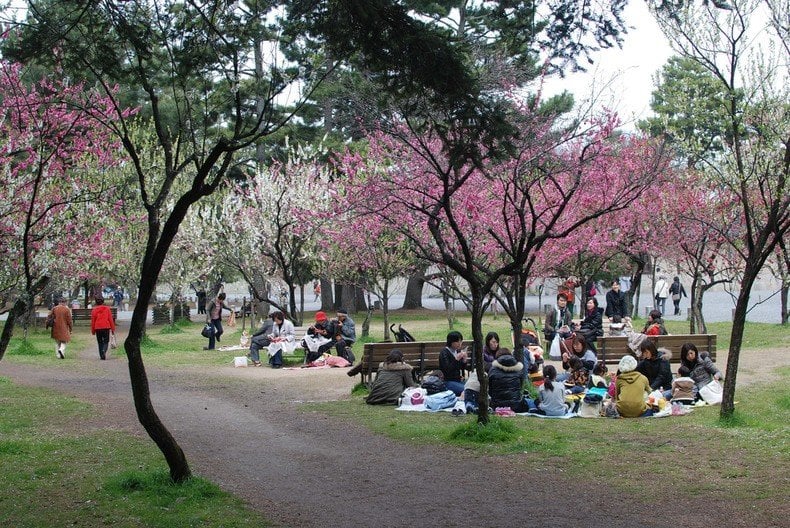
Kyoto temples and shrines
Kiyomizu-dera – An independent Buddhist temple in eastern Kyoto. The temple is part of the Historic Monuments of Ancient Kyoto and a UNESCO World Heritage Site.
Ryouan-ji – A Zen temple located in northwest Kyoto, Japan. He belongs to the Myōshin-ji school of the Rinzai branch of Zen Buddhism. It has a magnificent garden.
Byōdō-in – Buddhist temple in Uji City, Kyoto, Japan.
Kamomioya-jinja – Known as Shimogamo Shrine, it is a Shinto shrine, and is part of the Kamo Shrines.
Kyo-o-gokoku-ji - Better known as To-ji, is a Buddhist temple in Kyoto, Japan. Its name means "East Temple".
Sanjūsangen-dō - The Sanjūsangen-dō is a Buddhist temple in the Higashiyama district of Kyoto, Japan. Officially known as "Rengeō-in", or King Lotus Hall.
- Eikan-do;
- Shoren-in Monzeki;
- Sanzen-in Temple;
- Kennin-ji Temple;
- Tofuku-ji Temple;
- Toji Temple;
- Kodai-ji Temple;
- Nanzen-ji Temple;
- Tenryuji Temple;
- Shimogamo Jinja;
- Daikaku-ji Temple;
- Temple Gio-ji;
- Temple Jojakkoji;
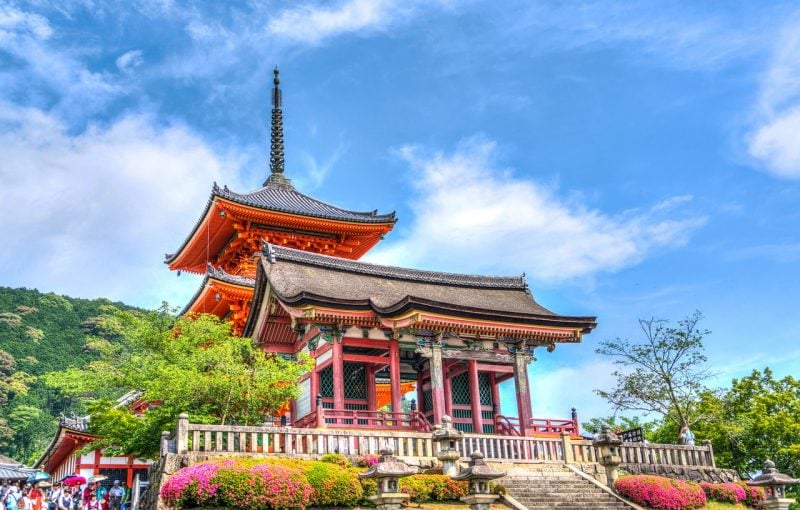
Conclusion and Author's Notes
For those who like history, culture and tradition like me, Kyoto is the cake and the icing. Full of incredible temples, this place offers everything a good culture lover could want, as well as religion, legends, ancient sites, it also has modern and developed sites such as its universities and technological centers. The latter leaves a bit to be desired when compared to the centers of Tokyo.
If I had to recommend this place, I would recommend it to people looking for relaxation and culture. For those who like excitement and technology I would recommend Tokyo, which is also another potential topic. That's all this article can offer, if you have any questions, suggestions or criticisms, just comment below. In addition, thanks to you, my dear reader, for following this article so far. And until next time.

